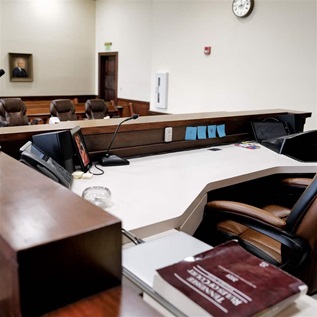Philadelphia Completes Groundbreaking Restoration of Alexander Milne Calder Sculptures Atop City Hall
The City of Philadelphia announced at a press conference the completion of a groundbreaking laser conservation project to enhance and preserve Alexander Milne Calder's eight monumental bronze sculptures on City Hall's tower. The sculptures—four majestic eagles and four figure groups representing the principles on which the new republic was founded—were lifted onto the tower between 1894 and 1896. For the first time since their installation, they were cleaned and treated to resist the attack of environmental pollutants and restored to ensure structural stability.
"The City is the steward of a host of magnificent pieces of art," Mayor Street said. "Each tells a part of the story of our City and Nation. Preserving these treasures for future generations is a responsibility we take seriously."
The City also announced plans to illuminate the sculptures with a new, long-lasting lens system, expected to be completed in the spring. An interpretive plaque will be installed at the north entrance to City Hall to provide information about the sculptures and their history.
The City of Philadelphia's Public Art Program launched a plan in 2003 to address the preservation needs of these eight bronzes. Their challenging environment and unique structure (the sculptures, including 24-foot high figures, are approximately 400 feet above ground) required careful planning and research. The support platforms for the sculptures were examined by the conservators of the Philadelphia Museum of Art. In 2005, the Chicago-based Conservation of Sculpture & Objects Studio, Inc. began work on the colossal structures using state-of-the-art laser technology never before applied in the United States on anything of this scale. Workers cleaned and treated the interiors of the hollow pieces, and removed the corrosion and encrusted substances from the outside, much of which likely dated back to the first decades of exposure to the coal that fired nearby locomotives. The bronzes were then recoated with a protective sealant to safeguard against potential damage.
“The use of this laser technology on a project of this scope is groundbreaking within the conservation field,” said Andrew Lins, Senior Conservator of Decorative Arts and Sculpture at the Philadelphia Museum of Art, who provided oversight for the City on the restoration. “This work will have consequences far beyond this project as museums and conservators throughout the country face the conservation needs of aging works of art and architecture.”
The City of Philadelphia provided $1.5 million in support of the project, with grants from The Pew Charitable Trusts ($450,000); Save America's Treasures ($300,000); and the National Endowment for the Arts ($80,000). A grant from the Getty Foundation will support a documentary of the project.
“Philadelphians and visitors alike have long admired City Hall and its clock tower as an important icon for the city,” said Rebecca Rimel, president and CEO of The Pew Charitable Trusts. “The tower sculptures are not only spectacular works of art, but are closely tied to our region's heritage. Pew is proud to be a part of this magnificent effort to help ensure their beauty and stability for years to come.”
For additional details on the restoration project, please see the fact sheet. For compelling, high resolution images of the project, visit the press room of the Philadelphia Museum of Art at http://www.philamuseum.org/press/releases/2007/575.html.
The City of Philadelphia's Public Art Program of the Department of Public Property consists of the Percent for Art Program and the Conservation and Collection Management Program, supporting the commissioning of new works of public art and overseeing the preservation of the City's public art collection — considered one of the most impressive collections in the country. In 1959, Philadelphia became the first city in the United States to enact a Percent for Art ordinance to beautify and adorn architecture and public spaces. In recent years, dozens of public artworks have received conservation treatment to repair the effects of acid rain, vandalism, and nature, and to ensure their preservation for future generations.
Founded in 1876, the Philadelphia Museum of Art is among the largest art museums in the United States, showcasing more than 2,000 years of exceptional human creativity in masterpieces of painting, sculpture, works on paper, decorative arts and architectural settings in Europe, Asia and the Americas. The striking neoclassical building stands on a nine-acre site above the Benjamin Franklin Parkway and houses more than 200 galleries. The Museum's Department of Conservation, staffed by experienced professionals and scientists, is widely admired for its expertise in analyzing and treating works of art in all mediums. The Museum offers a wide variety of enriching activities, including programs for children and families, lectures, concerts and films. In 2002, PMA was designated a Commonwealth Treasure by the Commonwealth of Pennsylvania.






